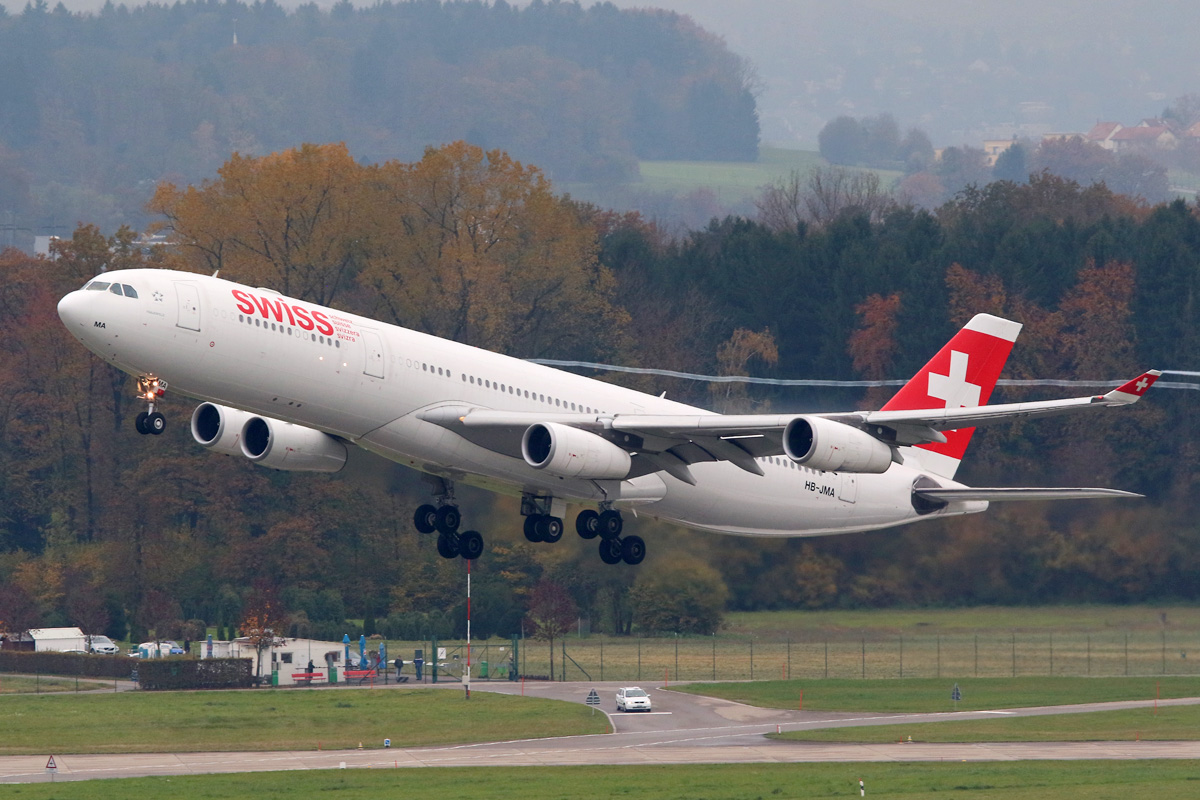Introduction
My Canon EOS 7D had been a good and reliable spotting companion for several years. I appreciate(d) almost everything the camera has to offer, and considered the best choice for my planespotting hobby. Both its AF and its burst mode are very fast, the design is sturdy and almost indestructible, and being a crop-sensor camera, it gives me the extra range I often require for my hobby. The one major drawback is of course its horrible performance in low-light/high-ISO situations. Even when shooting RAW and applying noise reduction in Lightroom, I rarely dared to venture above the ISO500 line, and usually settled for ISO320, relying on hopefully steady hands if the light would fade even more.
Since my trusty old 7D had already surpassed the official shutter lifetime of 150'000 counts (it's at 184'546 counts right now), and I had ruined the flash mount a year ago, I had been looking around for a good replacement for a while. When the 7D Mk II was finally announced, I knew that this was it. With its emphasis on speed in burst mode (10 frames/sec) and AF, plus the focal length advantage of a crop camera, it was exactly what I had been looking for. When I pre-ordered it, it wasn't known yet how good the old 7D's major weakness - ISO/noise - was corrected. But since I had learnt to live with the original 7D's crappy noise performance, I was happy with anything that wasn't worse. When I received the Mark II two days ago, I took advantage of the dull weather and decided to let the two 7Ds compete head-to-head during a little planespotting session at Zurich Airport.
Setup: Since there is no good way of importing the 7D MKII's RAW images to Lightroom yet, I decided to just use the JPG images from both cameras. Both cameras were running at the highest quality setting, with in-camera noise reduction set to "Standard" (except where mentioned otherwise). Of course reducing noise would normally be left to post production Lightroom. For all tests I used the Canon EF 100-400mm f/4.5-5.6L IS USM.
Planespotting with both cameras
Let's start with a few "comparable" shots from both cameras. The thumbnails below were just resized and not processed otherwise. Click on them to get to the original, out of camera, JPEG.
| Canon EOS 7D | Canon EOS 7D MKII |
| ISO400 | |
1/500 @ F6.3 |
1/500 @ F6.3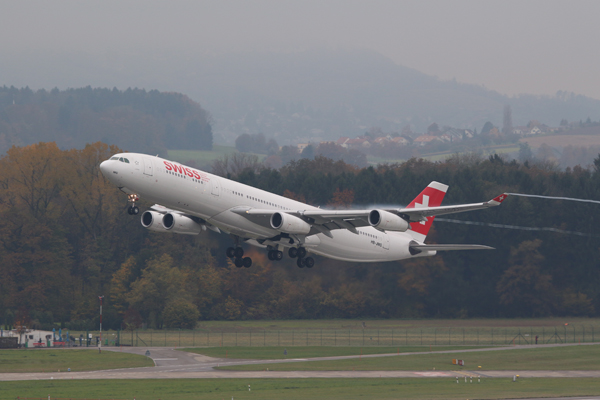 |
| ISO800 | |
1/640 @ F8 |
1/640 @ F8 |
| ISO1600 | |
1/1000 @ F8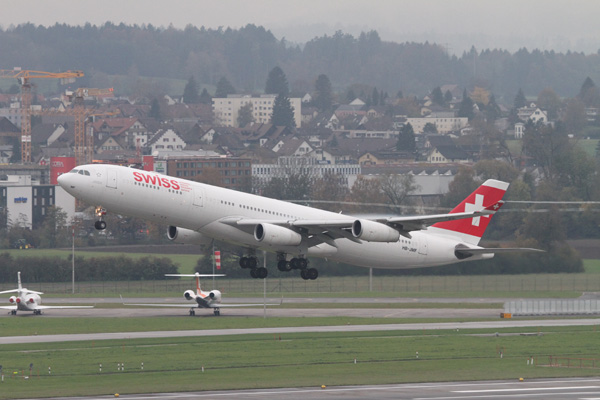 |
1/1000 @ F8 |
A more detailed look at the noise levels
Now let's have a look at the details. The following cut-outs were taken from the full-sized, out-of-camera JPGs and show the original resolution. Once again, "Standard" high ISO noise reduction was active in both cameras. Unfortunately, some of the photos were blurry (either due to motion or heat/engine haze), hence the few missing ISO settings. See my test from home further below to see a complete series.
| Canon EOS 7D | Canon EOS 7D MKII |
| ISO200 | |
-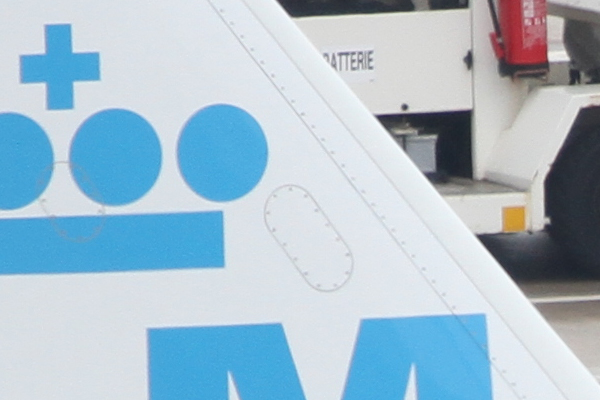 |
Looks soft, but probably due to my unsteady hand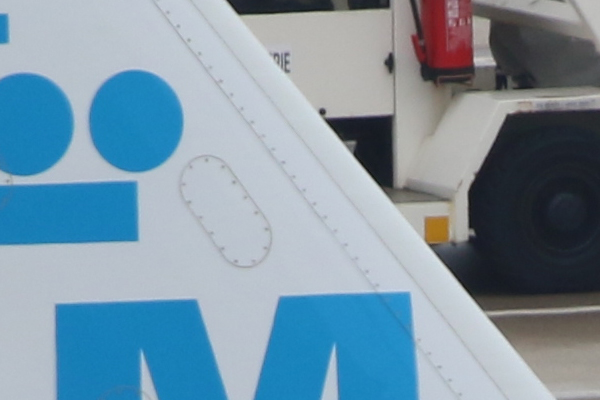 |
| ISO320 | |
-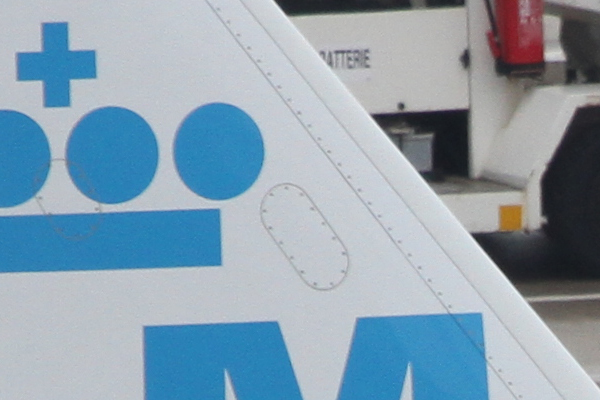 |
-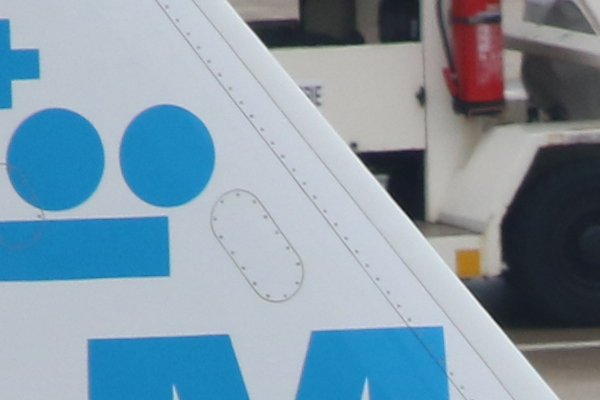 |
| ISO640/800 | |
ISO640 |
ISO800 (ISO 640 was blurred) |
| ISO1000 | |
- |
- |
| ISO1600/2000 | |
ISO2000 (1600 was blurred)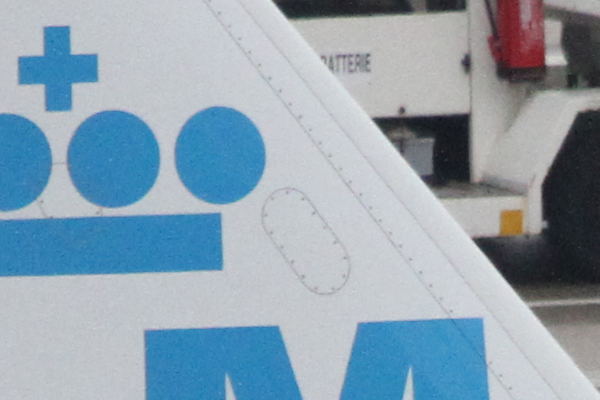 |
ISO1600 |
| ISO4000 | |
-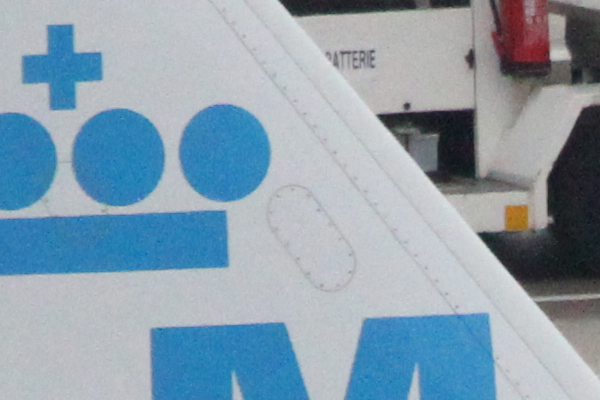 |
- |
| ISO12800/10000 | |
ISO12800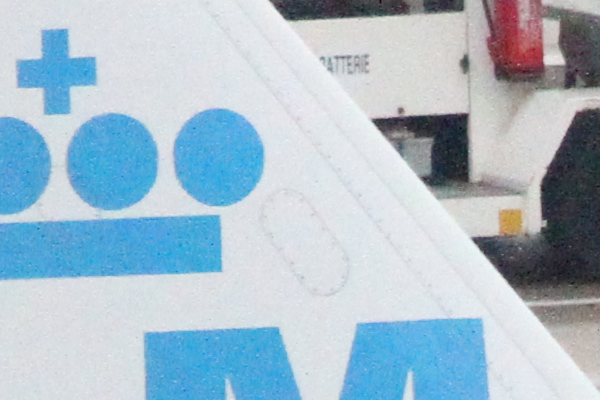 |
ISO10000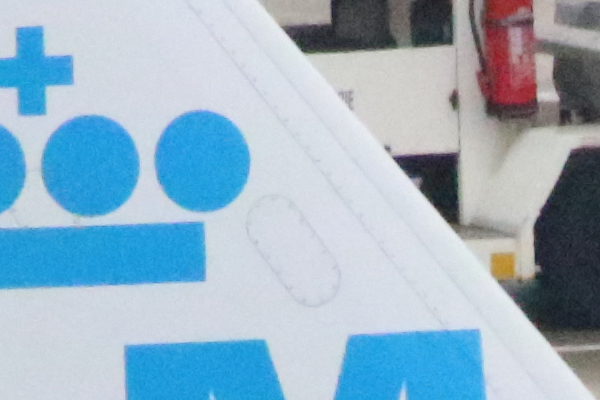 |
| 16000 | |
| - | ISO16000 |
Another look at the details, using another cut-out from the same photos.
| Canon EOS 7D | Canon EOS 7D MKII |
| ISO400 | |
- |
-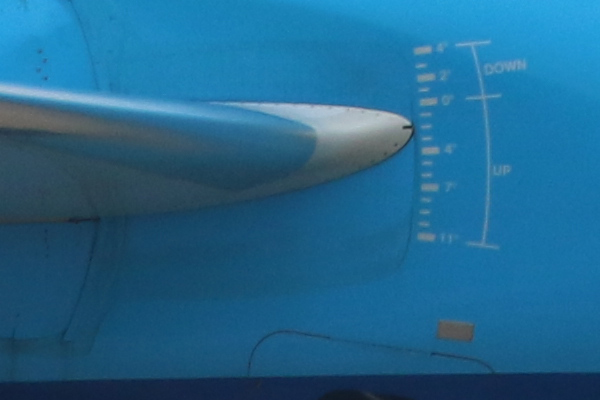 |
| ISO1000 | |
-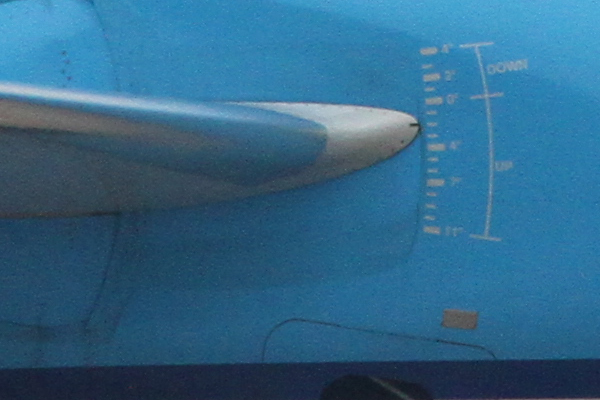 |
-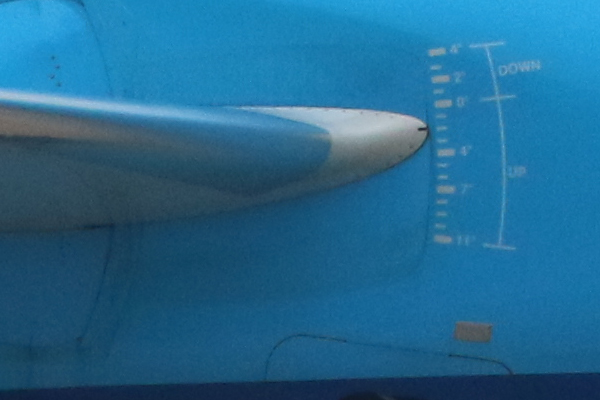 |
| ISO2000/2500 | |
ISO2000 |
ISO2500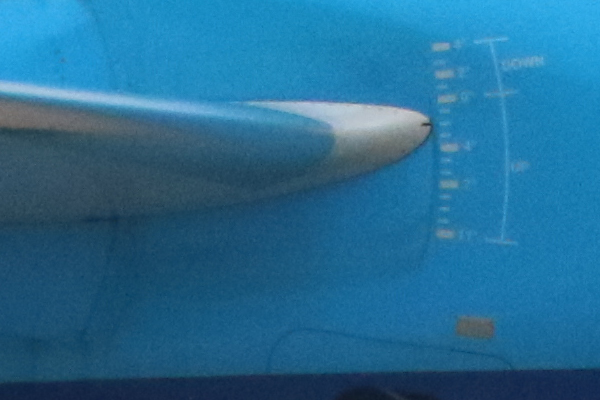 |
| ISO4000 | |
- |
- |
| ISO6400 | |
-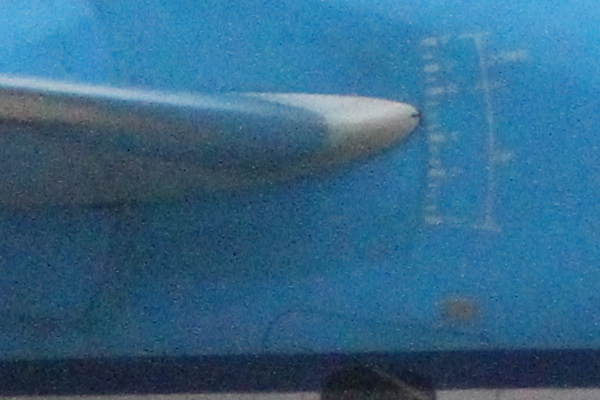 |
-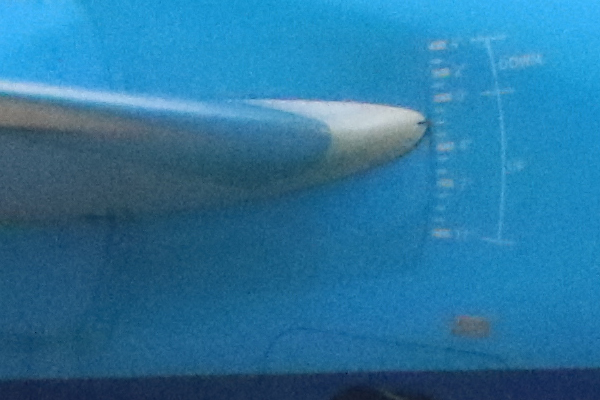 |
| ISO12800/16000 | |
ISO12800 |
ISO16000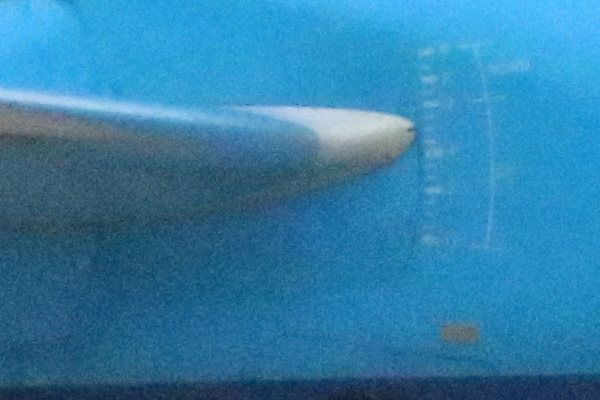 |
Since I wasn't really happy with the outcome of these tests at the airport, I repeated them at home, now using a tripod and operating the camera remotely via my laptop. So these findings should be a bit more consistent, even if not taken at an airport environment. For this test, the High ISO Noise Reduction was turned OFF on both cameras to represent what you would see importing a picture into Lightroom. Focal length was 115mm here.
| Canon EOS 7D | Canon EOS 7D MKII |
| ISO200 | |
-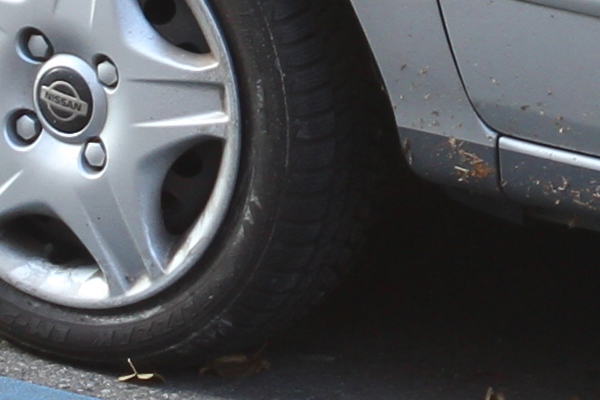 |
- |
| ISO320 | |
- |
-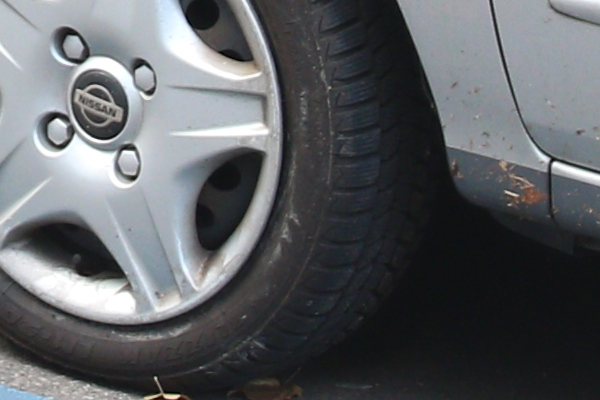 |
| ISO400 | |
- |
- |
| ISO640 | |
- |
-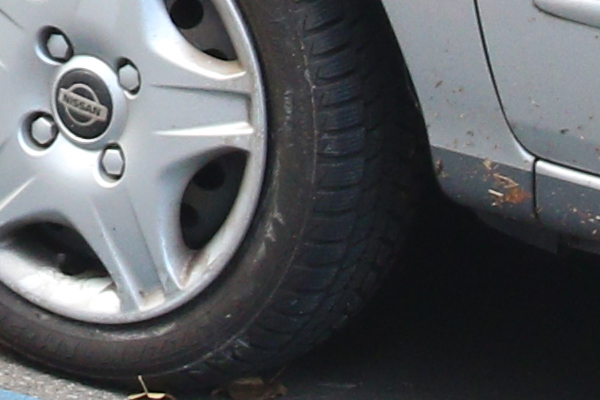 |
| ISO800 | |
-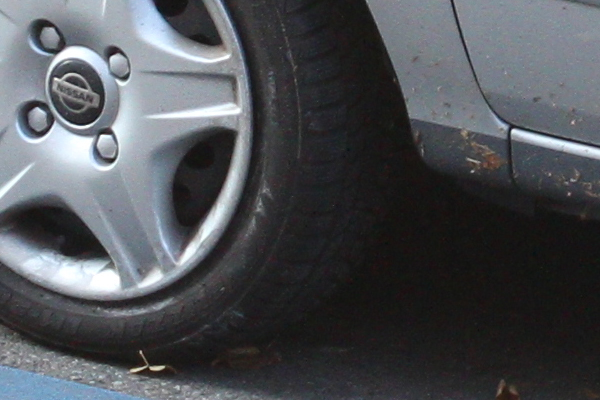 |
- |
| ISO1000 | |
- |
-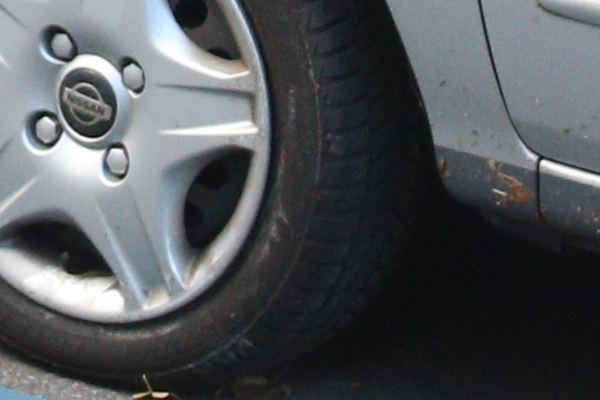 |
| ISO1250 | |
-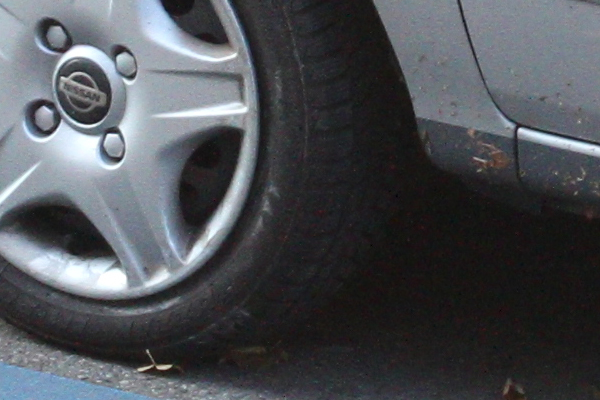 |
-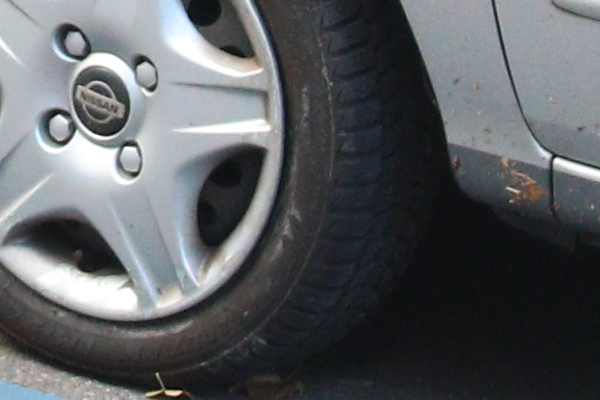 |
| ISO1600 | |
- |
-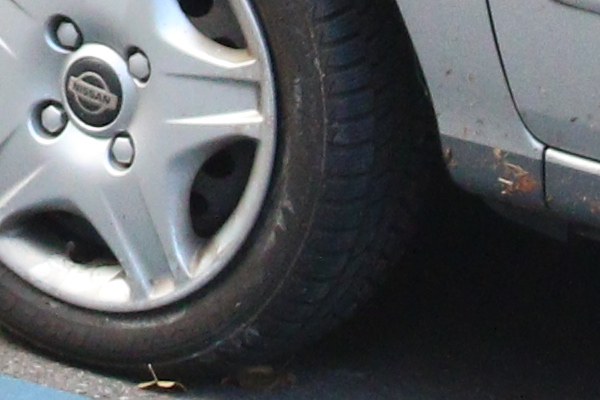 |
| ISO2000 | |
- |
- |
| ISO3200 | |
- |
-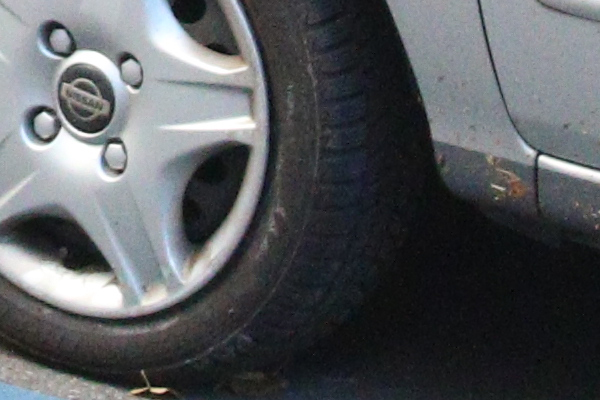 |
| ISO4000 | |
- |
-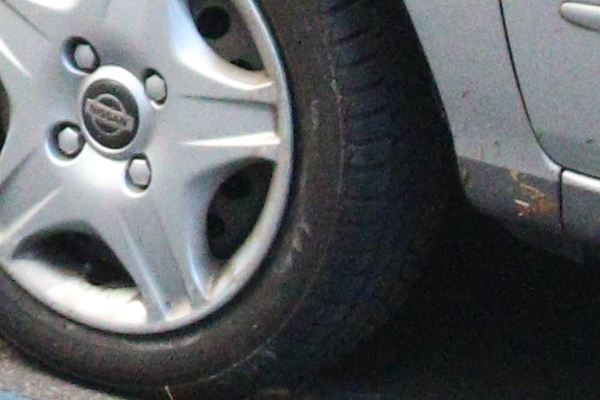 |
| ISO6400 | |
-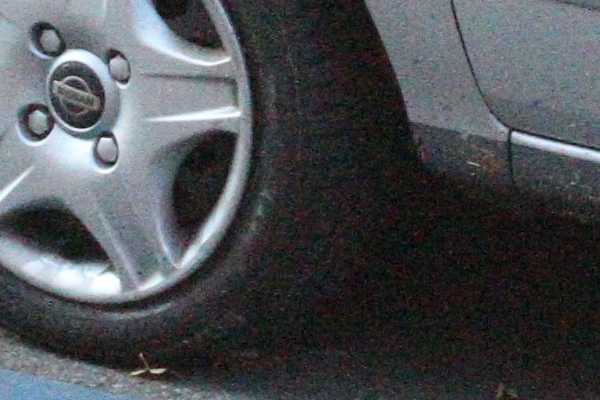 |
-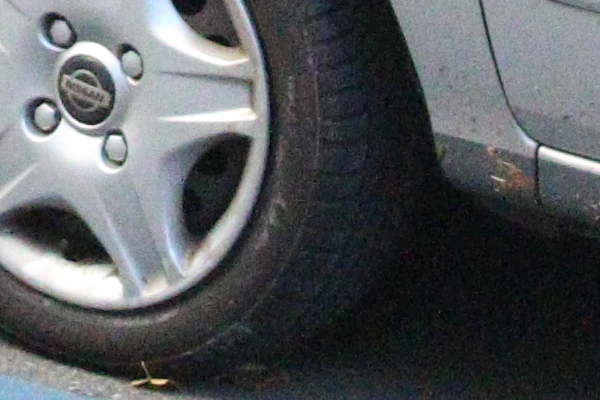 |
| ISO12800 | |
- |
- |
It has been suggested that the noise levels of the MKII are about 2 full stops better than the original 7D's. This would mean that ISO800 with the MKII should produce about the noise levels of ISO200 with the 7D, or ISO3200 with the MKII will produce the same as ISO800 with the 7D. Let's see:
EOS 7D, ISO200 |
EOS 7D MKII, ISO800 |
EOS 7D, ISO800 |
EOS 7D MKII, ISO3200 |
To me this seems a bit too much. Comparing several of the 7D's images to the MKII's ISO2000 picture, the difference seems to be somewhere between 1 2/3 stops (ISO640), 1 1/3 stops (ISO800) and 1 stop (ISO 1000)
1 2/3 stops:
EOS 7D, ISO640 |
EOS 7D MKII, ISO2000 |
1 1/3 stops:
EOS 7D, ISO800 |
EOS 7D MKII, ISO2000 |
1 stop:
EOS 7D, ISO1000 |
EOS 7D MKII, ISO2000 |
Using some other ISO levels and images, the 1 1/3 stops appear to be quite accurate. ISO320 with the 7D looks just about like ISO800 with the MKII, and ISO400 looks like ISO1000 respectively.
EOS 7D, ISO320 |
EOS 7D MKII, ISO800 |
EOS 7D, ISO320 |
EOS 7D MKII, ISO800 |
EOS 7D, ISO400 |
EOS 7D MKII, ISO1000 |
So roughly 1 1/3 stops is what you win over the original 7D. This allows you to use 1/500 instead of 1/200 with the 7D, or 1/1250 instead of 1/500 with the 7D.
Some edited shots with the 7D MKII
Finally, some edited shots out of the 7D MKII, once again just using the JPEGs. Click on them to open the unedited, out-of-camera, JPEG file, with the camera's noise reduction applies.
ISO400, 1/500s, F6.3, 235mm
ISO500, 1/200, F6.3, 275mm
ISO800, 1/640, F8, 275mm
ISO1000, 1/400, F6.3, 260mm
The following one I'm not happy with, but I guess that the high amount of noise is also partly caused by the long distance and the moist/misty air.
I left it unedited (except resized) so as not to add any additional noise.
ISO1250, 1/400, F5.6, 400mm
This one looks much better again, despite the slightly higher ISO.
And this one shows that you can even get decent results at even higher ISOs...
So, what do I think of the image quality and especially the noise levels?
Sports Photographer Scott Kelby was amazed by the 7D Mk II's good handling of noise, and excitedly attested it the best sensor of any APS-C camera in his hour-long podium/review video. He also shot two Football games with the camera, and included some of his amazing photos in high-res. Look at his photos and watch the video on his website.
Personally, I'm not that excited, but I am happy about the improvements made. Judging by the examples above, I guess that ISO1'000 or even ISO1'600 pictures will satisfy me and will be good enough to work with. And even on this very dark day, ISO1000 left me with 1/400 at F6.3 during the worst times, which is pretty okay. I wouldn't have minded another 1/3 or 2/3 stops, but it still sounds pretty promising. 99% of the time I shoot airliners in daylight or maybe just before dawn. And from that perspective, the 7D Mk II is just what I need. Of course, I wouldn't have minded an even better performance with regards to noise, but for a crop camera, it really isn't bad.
Some interesting gimmicks
There's a lot of fun and helpful stuff buried deep within the Mark II's extensive menus, and here's some of it.
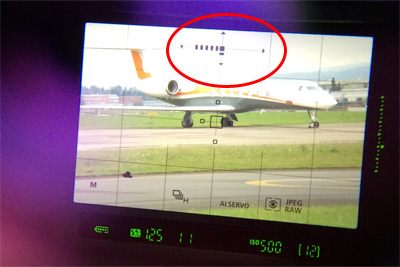 |
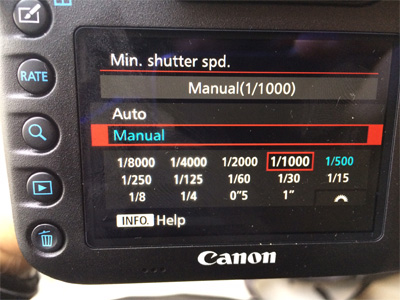 |
| A lot of information can be added to the viewfinder (yes, viewfinder, not the screen). Besides different shooting settings (black icons at the bottom) and the usual grid you can also display a 2-way level (circled red) which helps you hold your camera straight. | Compared to the 7D you can now set boundaries to the Auto ISO function. It allows you to select a min and max ISO, but also a minimum shutter speed. Unfortunately, only a few shutter speeds can be selected here, with the ones I traditionally aim for when spotting (1/640 or 1/800) not available. 1/500 can still be blurred, and 1/1000 might push up the ISO too high. So I'm not sure how often I'll use this function, but I'll try it with 1/1000. |
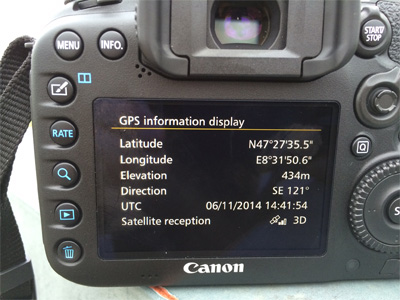 |
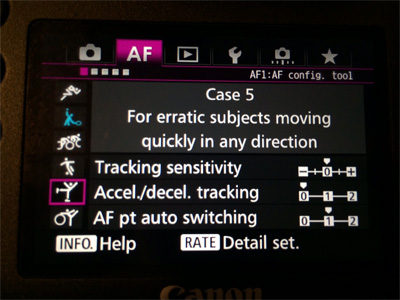 |
| The 'big' new addition of the 7D MKII is the integrated GPS, which may be useful to some and is fun to play around with. Elevation and direction of the camera are fancy, too. However, with GPS on, the camera keeps updating its position even if the camera is turned off, resulting in *some* battery consumption (I haven't figured out yet how much it affects battery life). | Of course the main thing the 7D MKII is about, is AF speed, and a large menu including five submenus is dedicated to this. Six different 'case studies' allow an easy selection of a fitting AF mode, and this can be further tweaked on the following four subpages. I won't go into more detail here, but there are enough geeky websites who will do just that. |
As for the GPS, of course it geotags the photos, which can in turn be analyzed in the Canon software. It even shows the direction the camera was pointed in when taking the picture, should you have been too drunk to remember it :-)

The camera can also be used as a GPS logger, and it keeps logging its GPS position at a selectable interval. This also continues even when the camera is switched off, or switching off automatically. Tracks can afterwards be saved to the memory cad. Importing the tracks to the computer is a bit of a hassle and requires two or three different Canon softwares working together, but in the end you do end up with a neat GPS track of your route (in this case my way home from the airport). The camera was located inside my camera backpack, with a rain jacket on the camera, so reception seems to be pretty good.

P.S. Some more photos from a test run in sunny weahter - once again only edited JPEGs.
Especially for these long distance shots, being able to use ISO320 without any fears of heavy noise was great, as it let me raise the shutter speed to 1/1600s. This allowed to reduce the possibility for motion/shaking blur to a minimum. The images still show a bit of noise, especially after being processed with the "Shadow/Highlight" function in Photoshop. This could be considerably reduced by developing them as RAWs and applying noise cancellation there.
ISO320, 1/1600s, F8, 400mm
ISO320, 1/1600s, F8, 400mm, cropped considerably
ISO320, 1/1600s, F8, 400mm
ISO320, 1/1600s, F8, 340mm



